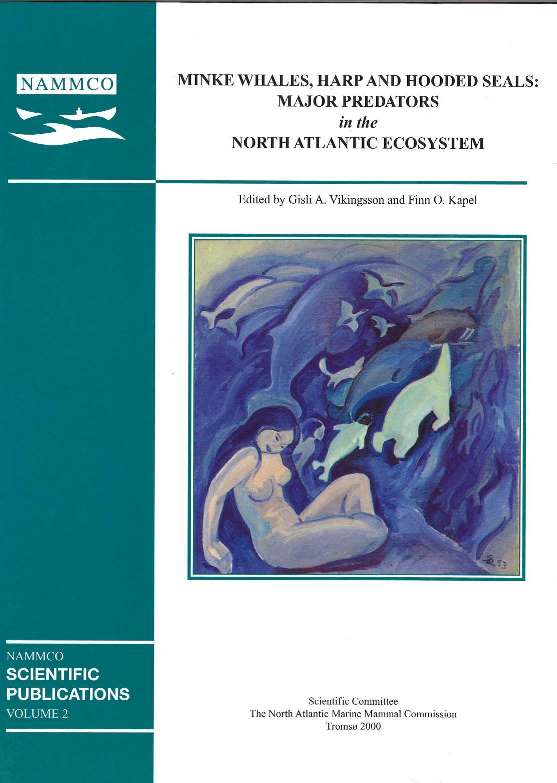Estimated food consumption of minke whales Balaenoptera acutorostrata in Northeast Atlantic waters in 1992-1995
DOI:
https://doi.org/10.7557/3.2972Keywords:
food consumption, minke whales, Balaenoptera aeutorostrata, preyAbstract
Data on energy requirements, diet composition, and stock size were combined to estimate the consumption of various prey species by minke whales (Balaenoptera acutorostrata) in Northeast Atlantic waters. In the period 1992-1995, the stock of 85,000 minke whales appeared to have consumed more than 1.8 million tonnes of prey per year in coastal waters off northern Norway, in the Barents Sea and around Spitsbergen during an assumed 6 month stay between mid-April and mid-October.
Uncertainties in stock estimates suggest a 95% confidence range of 1.4 - 2.1 million tonnes. The point estimate was composed of 602,000 tonnes of krill Thysanoessa spp., 633,000 tonnes of herring Clupea harengus, 142,000 tonnes of capelin Mallotus villosus, 256,000 tonnes of cod Gadus morhua, 128,000 tonnes of haddock Melanogrammus aeglefinus and 54,500 tonnes of other fish species, including saithe Pollaehius virens and sand eel Ammodytes sp. Consumption of various prey items by minke whales may represent an important mortality factor for some of the species. For example, the estimated annual consumption of herring corresponds to about 70% of the herring fisheries in the Northeast Atlantic in 1995. Minke whale diets are subject to year-to-year variations due to changes in the resource base in different feeding areas. Thus, the regional distribution of consumption of different prey items is highly dynamic.





